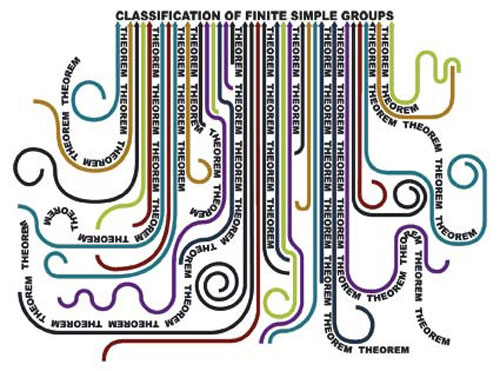
Plus Advent Calendar Door #24: An enormous theorem
It's Christmas eve! On this very special day we thought we'd explore a very special theorem. Its initial proof, first announced in 1981, ran to over 10,000 pages, spread across 500 or so journal articles, by over 100 different authors from around the world, was without precedent. It must be counted the longest in history.
The object of the proof was to classify all the finite simple groups. Groups are algebraic structures we explored with door 19 of the advent calendar that come up all over mathematics and beyond. Finite simple groups are the building blocks that finite groups are made up of; they are the atoms of group theory, so a good understanding of those finite simple groups is the basis of understanding any finite group.
The classification of finite simple groups provides a complete list of all the finite simple groups. There are precise (though highly technical) descriptions of 18 infinite families of finite simple groups. On top of these 18 families, there are 26 individual groups, the so-called sporadic groups. The largest of these is called the Monster and weighs in at 808,017,424,794,512,875,886,459,904,961,710,757,005,754,368,000,000,000 elements! Every finite simple group either belongs to one of the 18 families, or is one of the 26 sporadic groups.
Intrigued? Then find out more about groups, simple groups, and this enormous theorem in this article by Richard Elwes, which was the winner of the Plus new writers award 2006.

Happy Christmas!
Return to the Plus advent calendar 2021.
About this article
This article now forms part of our coverage of a major research programme on group theory held at the Isaac Newton Institute for Mathematical Sciences (INI) in Cambridge. The INI is an international research centre and our neighbour here on the University of Cambridge's maths campus. It attracts leading mathematical scientists from all over the world, and is open to all. Visit www.newton.ac.uk to find out more.
